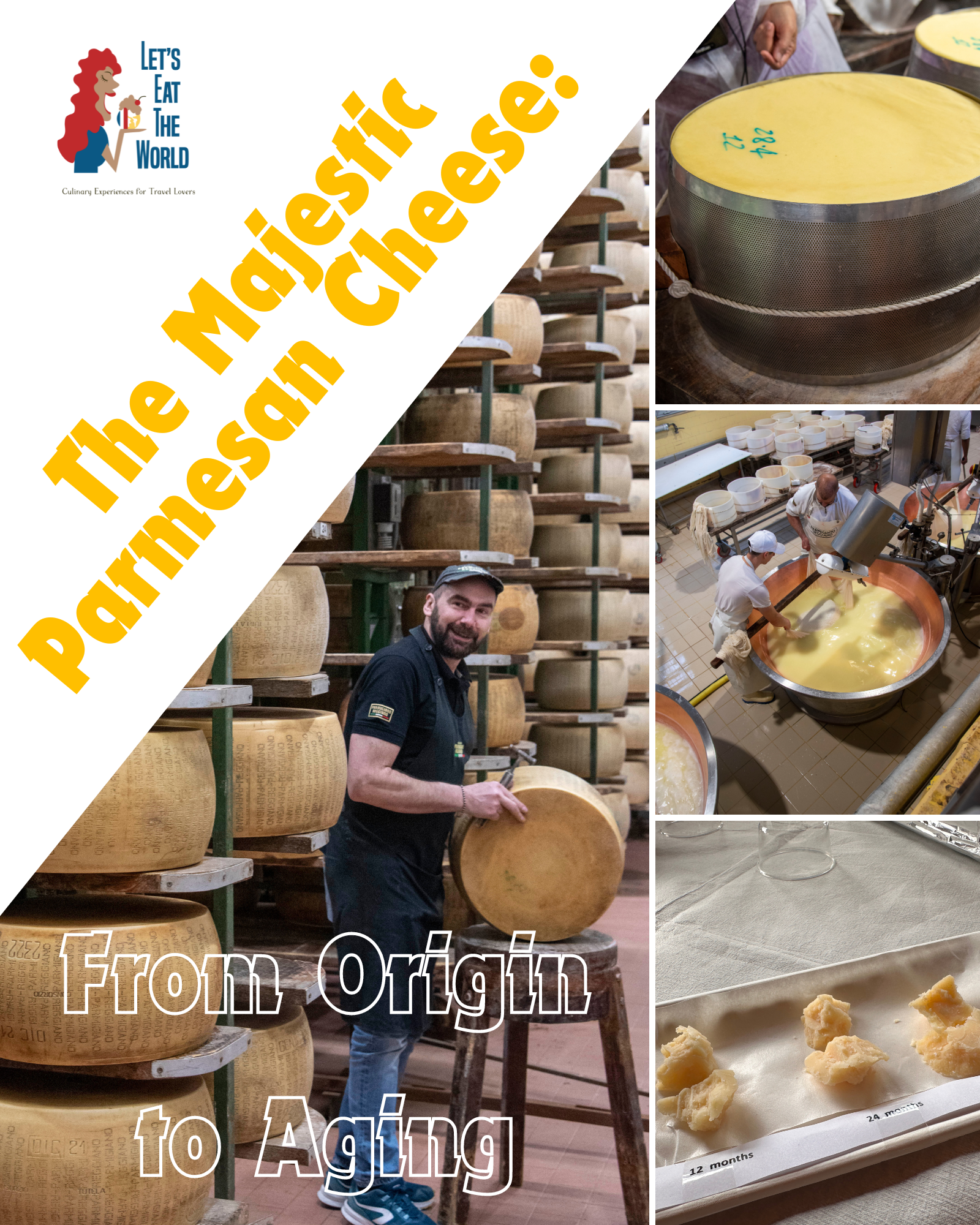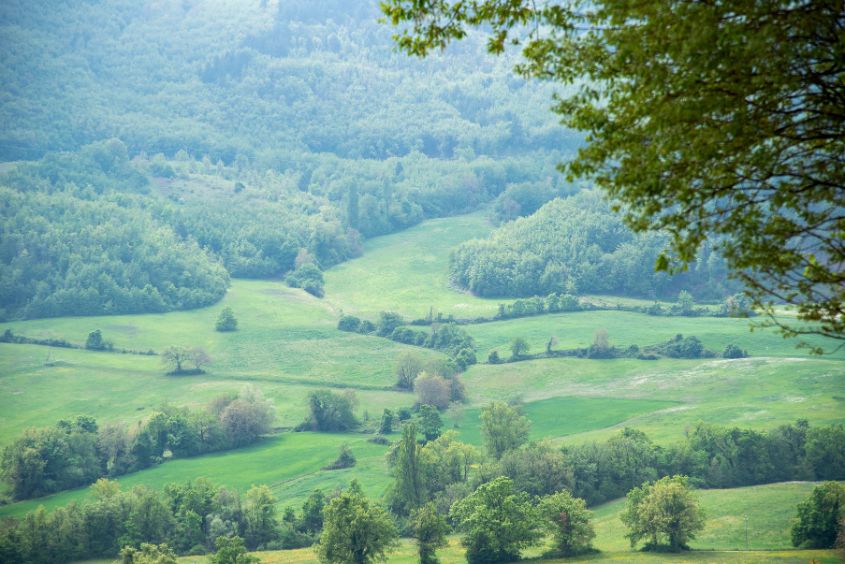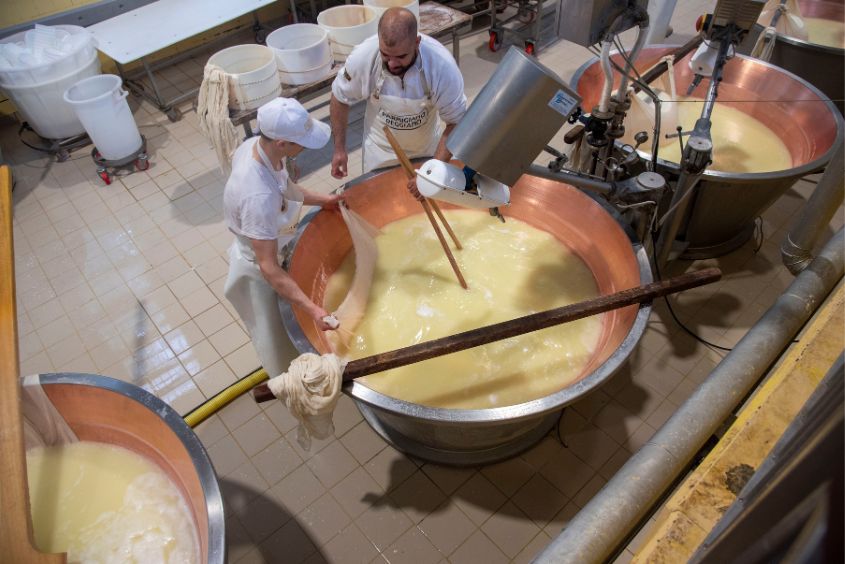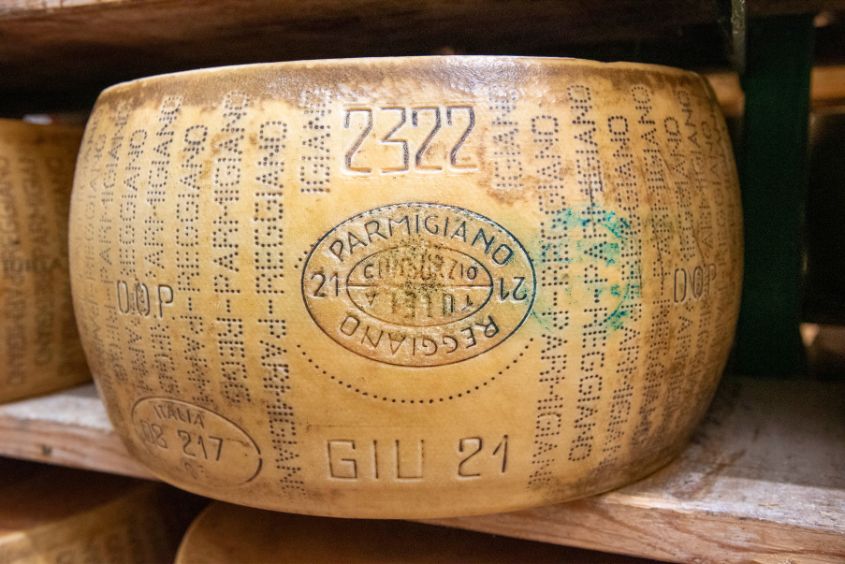
The Majestic Parmesan Cheese: From Origin to Aging
Picture this: rolling green hills, contented cows grazing under the golden Italian sun. Welcome to the land of Parmigiano Reggiano, the king of cheeses. This isn’t just any cheese; this is a labor of love, a tradition passed down through generations, and a taste of Italy’s finest.
The Origin of Parmigiano Reggiano
Parmigiano Reggiano, or Parmesan cheese, dates back to the Middle Ages in Parma, Reggio Emilia, Modena, and parts of Mantua and Bologna. Monks first crafted it as a way to preserve milk for longer periods. Their dedication gave birth to the Parmesan we know today.
It wasn’t only monks and local farmers who helped preserve this tradition. During the Second World War, Parmesan production faced major threats, just like other prized Italian food traditions. While Grana Padano is noted for being safeguarded in part by the Sheik Indians who migrated to the Po Valley and worked in dairies, Parmigiano Reggiano’s survival owes itself mainly to the steadfast local producers of Emilia Romagna who refused to let the craft die out.
How Parmesan Cheese is Made
The process starts with high-quality raw cow’s milk, drawn from cows fed on local forage. Cheesemakers partially skim the milk and add natural whey and calf rennet. They heat and stir the mixture to form curds. Cheesemakers then collect the curds, press them into molds, and remove excess whey.
After brining, the cheese wheels age for a minimum of 12 months, with many left for up to 36 months or longer. During this time, producers turn and brush each wheel, building the texture and flavor that make Parmigiano unique.
Certification and Quality
The Consorzio del Formaggio Parmigiano Reggiano strictly regulates Parmigiano Reggiano. Each wheel is inspected, and only those that meet the rigorous standards receive the certification mark. The cheese’s authenticity, origin, and quality distinguish it from imitators.
The Aging Process
Matured wheels are often enjoyed with local specialties. A shard of Parmigiano pairs beautifully with a drizzle of traditional balsamic vinegar or alongside slices of Prosciutto di Parma and Culatello. For the full experience, locals often pour a glass of Lambrusco or Malvasia to balance the richness.
Aging is where the magic happens. Over months and years, Parmigiano Reggiano develops its complex flavors, ranging from nutty and fruity to rich umami notes. The texture transforms from slightly grainy to crystalline, perfect for grating over pasta or enjoying as a standalone treat.
Parmesan vs. Grana Padano: What’s the Difference?
While Parmigiano Reggiano and Grana Padano appear similar, key differences set them apart:
- Origin and Production Rules: Parmigiano Reggiano is produced in a more restricted area with stricter regulations compared to Grana Padano.
- Aging: Parmesan is aged longer, contributing to its intense flavor and crumbly texture.
- Diet of Cows: Parmigiano Reggiano cows are fed a diet free from silage, while Grana Padano cows can consume silage.
- Additives: Grana Padano allows the use of lysozyme, a natural egg protein, as a preservative, which is not permitted in Parmigiano Reggiano.
These differences explain why Parmigiano Reggiano delivers such unmatched depth of flavor and texture.
Thanking the Producers
We thank the dedicated dairy farmers and cheesemakers of Emilia Romagna. Their passion ensures every wheel of Parmigiano Reggiano becomes a masterpiece of culinary craftsmanship.
Come to Parma and try it for yourself!
Ready to taste Parmigiano Reggiano for yourself? Join our Let’s Eat Parma culinary holiday, where you’ll explore the heart of Italy’s cheese-making tradition. Explore the heart of Italy’s cheese-making tradition. Meet artisans and enjoy Italian cooking lessons with Ilaria Bertinelli and uncover Parma’s hidden gems.

See you in Parma!





